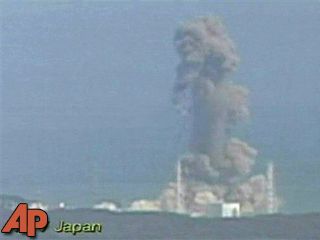By Sharon Squassoni
Mar 14, 2011
Q1: How bad is the damage to Japan's nuclear power plants from the earthquake?
A1: Japan operates 54 nuclear power plants that provide about 30 percent of Japan's electricity (compared to the United States' 104 plants providing 20 percent of total electricity). Of the 54, 11 automatically shut down with the tremendous earthquake on March 11. This is the first and very important step in reactor safety. Many nonnuclear electricity generating stations (natural gas, hydro, etc.) also shut down, particularly in the northeast of Japan. The critical difference is that nuclear reactors require continuous power after a shutdown to keep the radioactive fuel cool.
Of the 11 that shut down, one had a fire (Onagawa), one had a partial core meltdown and a hydrogen-fueled explosion that destroyed the containment building but not the steel containment vessel (Fukushima Daiichi Unit 1), and a third appears also at risk for partial core meltdown because fuel rods have been exposed (Fukushima Daiichi Unit 3). In a last-ditch effort to cool the cores of Units 1 and 3, officials injected seawater into them, which means the end of the useful life of those reactors.
Q2: How does this compare to Chernobyl or Three Mile Island?
A2: This is not a Chernobyl. The International Atomic Energy Agency has rated Japan's nuclear emergency "4" on the International Nuclear Events Scale (INES), which runs from 1 to 7. Three Mile Island was rated a 5; Chernobyl was rated a 7. Chernobyl has been the most severe accident yet. The nuclear chain reaction there could not be controlled for a variety of reasons (including the reactor's design), and the lack of a containment structure around the reactor meant widespread radioactive contamination. The situation in Japan is much more like Three Mile Island, where a partial core meltdown occurred because of loss of coolant. Radiation levels have risen, not just within the facilities but also at the perimeters, and there have been at least two worker deaths and several illnesses. The detection of Cs-137 in the air suggests the fuel has partially melted in one of the reactors.
Q3: What does this mean for citizens of Japan and for the future of nuclear power in general?
A3: The government of Japan has taken the precautionary measure of evacuating citizens in a 20-kilometer zone around the Fukushima Daiichi and Daini reactors (10 reactors in all) to minimize the potential health threats. It is too soon to tell what impact this will have on nuclear power in Japan, in light of the tremendous challenges of responding to the devastation caused by the earthquake, tsunami, and aftershocks.





